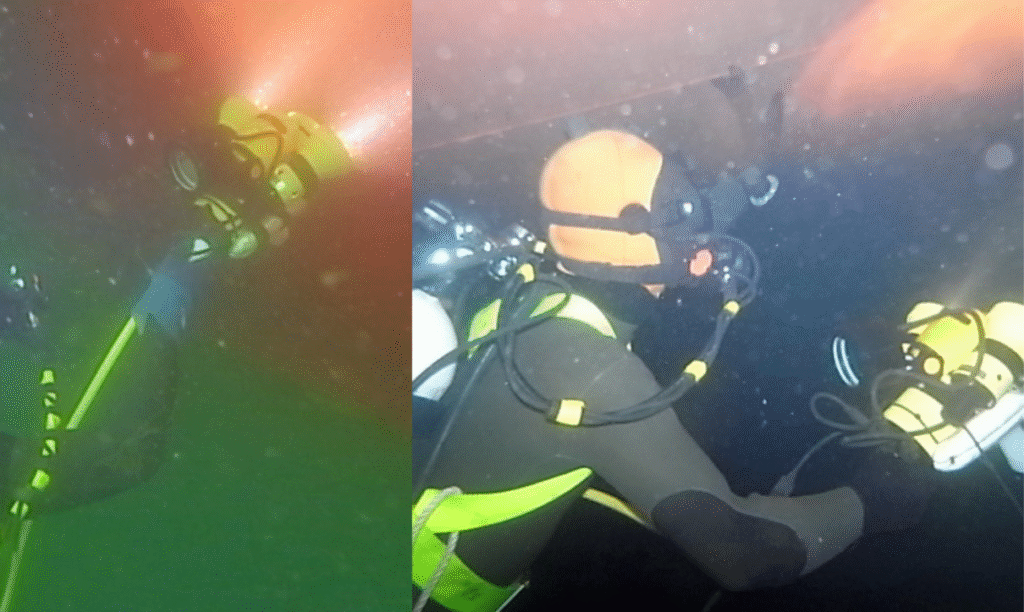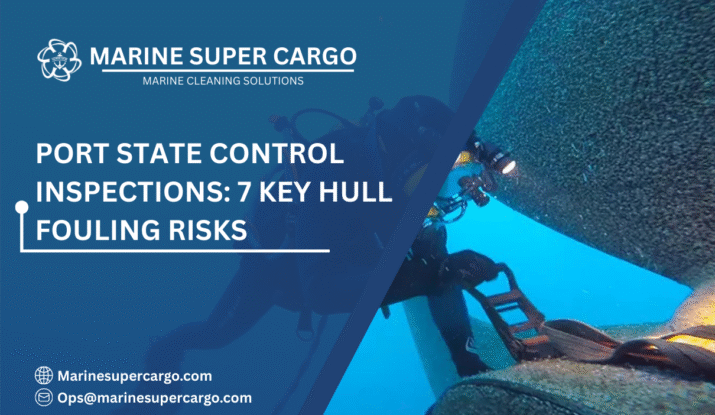Shipping has always been the beating heart of global trade, carrying more than 80% of the world’s goods across oceans. But with opportunity comes responsibility. One of the most critical responsibilities ship owners face today is preparing for Port State Control Inspections. These inspections are not just routine—they can make or break your voyage, especially when it comes to something as silent yet dangerous as hull fouling.
Imagine your ship as an athlete. A clean hull is like strong, fresh lungs. But when fouling builds up—barnacles, algae, or invasive organisms—your ship struggles to breathe. It slows down, burns more fuel, and risks detentions at port. In this article, we’ll explore how Port State Control Inspections work, why hull fouling is a growing concern, and what strategies you can adopt to stay compliant, efficient, and environmentally responsible.
Understanding Port State Control Inspections
To begin, let’s break down the concept. Port State Control Inspections are official checks carried out by maritime authorities of a port state to verify that visiting foreign ships comply with international conventions. These conventions, like MARPOL (International Convention for the Prevention of Pollution from Ships) and SOLAS (Safety of Life at Sea), ensure ships are safe, secure, and environmentally sound.
During an inspection, authorities may check:
- Ship documentation (safety, crew certifications, maintenance logs)
- Onboard safety systems and pollution prevention equipment
- Hull conditions and biofouling management practices
If deficiencies are found, ships can face penalties, detentions, or even bans from operating in specific regions. This is why hull fouling—a problem many owners underestimate—can quickly escalate into a compliance nightmare.
For more, refer to IMO, which outlines global port state control regimes, and IMCA, which details inspection protocols.

Hull Fouling: The Silent Culprit Behind Detentions
Hull fouling occurs when marine organisms attach themselves to a ship’s submerged surfaces. It might look like a minor inconvenience, but it’s a ticking time bomb. Let’s consider the risks:
- Fuel Inefficiency: A fouled hull increases drag, forcing engines to consume 20–40% more fuel. That’s not just a cost issue—it directly increases emissions, a red flag for Port State Control Inspections.
- Environmental Threats: Fouling organisms can hitchhike across oceans and invade new ecosystems. This transfer of non-native species is one of the greatest threats to marine biodiversity.
- Compliance Breaches: Under MARPOL and guidelines set by the International Maritime Organization (IMO), unmanaged biofouling is considered a pollution issue.
- Detention Risks: If inspectors find excessive fouling, your ship can be detained until corrective measures are taken. This delays schedules, adds costs, and damages reputation.
A case study from Marine Insight highlights a vessel detained in New Zealand purely due to severe biofouling. This shows how hull maintenance is now as important as engine checks.
Why Hull Fouling Matters in Port State Control Inspections
Authorities today are paying closer attention to hull fouling during Port State Control Inspections. This is due to:
- Stricter Regulations: Many countries, including Australia and New Zealand, enforce strict biofouling management standards. Ships entering without proper cleaning records risk detention.
- Environmental Pressure: With climate change and invasive species threats, regulators are under pressure to ensure ships don’t act as vectors of ecological damage.
- Industry Image: Ports want to maintain reputations as “green gateways.” Detaining non-compliant ships sends a strong message.
By ignoring fouling, you don’t just risk your ship—you risk your operating license in multiple regions. Learn more
Key Strategies for Managing Hull Fouling
So, how can ship owners and operators stay ahead? Let’s break down practical, proven strategies:
1. Regular Underwater Hull Cleaning
Routine cleaning prevents organisms from building colonies. Techniques like diver-assisted cleaning or remotely operated vehicles (ROVs) are increasingly used. Companies like CleanShip.co specialize in safe, eco-friendly cleaning services worldwide.
2. Antifouling Coatings
Modern coatings reduce organism attachment. Options include:
- Self-polishing coatings: Release biocides slowly, preventing fouling.
- Fouling-release coatings: Create slick surfaces that organisms can’t grip.
- Nanotechnology coatings: Still emerging, but promise longer-lasting results.
3. Documentation & Biofouling Plans
Maintaining records of hull inspections, cleanings, and coating applications is vital. Many port authorities now require a Biofouling Management Plan.
4. In-Water Cleaning with Filtration
Innovations include cleaning systems that capture debris to prevent the spread of invasive species—helping meet both compliance and environmental goals.
5. Crew Training
Even the best technology fails without awareness. Training crews on early fouling detection and record-keeping ensures smoother Port State Control Inspections.
✅ 4 Things to Check for Safety at Sea pic.twitter.com/dAxhJQ2i6U
— Marine Super Cargo (@Marinsupercargo) September 14, 2025
The Cost of Non-Compliance
The financial burden of fouling-related detentions can be staggering:
- Fuel Penalties: Extra fuel costs up to $1 million annually for large vessels.
- Detention Costs: Every day detained can cost $20,000–$50,000 in lost revenue.
- Reputational Damage: Blacklisting from ports or shipping registries can cut off critical trade routes.
According to the International Association of Ports and Harbors (IAPH), many ports are now prioritizing eco-compliance in docking permissions. Simply put, clean ships get preference.
Hull Fouling and Environmental Responsibility
Beyond compliance, this is also about stewardship. Ships are global citizens of the ocean. By controlling fouling, you help:
- Protect local ecosystems from invasive species
- Reduce carbon footprints through efficient sailing
- Build a reputation as a responsible operator
The IMO highlights biofouling as a key contributor to global biodiversity loss. Thus, clean hulls are no longer optional—they’re essential for sustainable shipping.
Also read about underwater hull cleaning in Ghana.
Future Trends in Hull Fouling Management
The industry is evolving. Expect innovations like:
- Autonomous hull cleaning robots that clean during voyages.
- AI-based predictive systems linking fouling levels with fuel performance data.
- Next-gen coatings with eco-friendly, non-toxic surfaces.
Ports are also sharing more data globally, meaning Port State Control Inspections will become smarter and harder to bypass.

Case Study: Success with Proactive Hull Cleaning
One bulk carrier operating in Southeast Asia faced repeated fouling problems that led to two detentions in a year. After partnering with CleanShip.co, the company implemented quarterly underwater cleaning and adopted fouling-release coatings. Within 12 months:
- Fuel consumption dropped 18%
- No detentions occurred
- Annual savings exceeded $750,000
This story illustrates how proactive management can turn a liability into a strategic advantage.
Conclusion
In the shipping world, Port State Control Inspections are unavoidable. Hull fouling, while silent, can become a ship owner’s loudest problem—causing detentions, fines, and reputational harm. But with regular cleaning, modern coatings, documented management plans, and expert partnerships, compliance becomes not just possible, but profitable.
Key takeaways:
- Fouling is both an economic and environmental threat.
- Port authorities are tightening biofouling rules.
- Proactive solutions save fuel, time, and reputation.
To ensure compliance and peace of mind, partner with experts like CleanShip.co for reliable hull cleaning and biofouling management.
FAQs:
Q1. Why are Port State Control Inspections important?
They ensure foreign ships comply with international safety and environmental standards. Failing an inspection can lead to costly detentions, fines, and reputational damage.
Q2. How does hull fouling affect ship performance?
Fouling increases drag, forcing engines to burn more fuel. This reduces efficiency, increases emissions, and heightens the risk of non-compliance.
Q3. Can hull fouling cause detentions?
Yes. Severe fouling is seen as a pollution and safety issue. Many ships have been detained in ports like New Zealand and Australia for excessive biofouling.
Q4. What strategies help manage hull fouling?
Regular underwater cleaning, advanced antifouling coatings, biofouling management plans, and eco-friendly filtration systems are the most effective.
Q5. What role does CleanShip play in compliance?
They provide expert underwater hull cleaning and fouling management services, helping ships meet international compliance while saving on fuel and operational costs.


